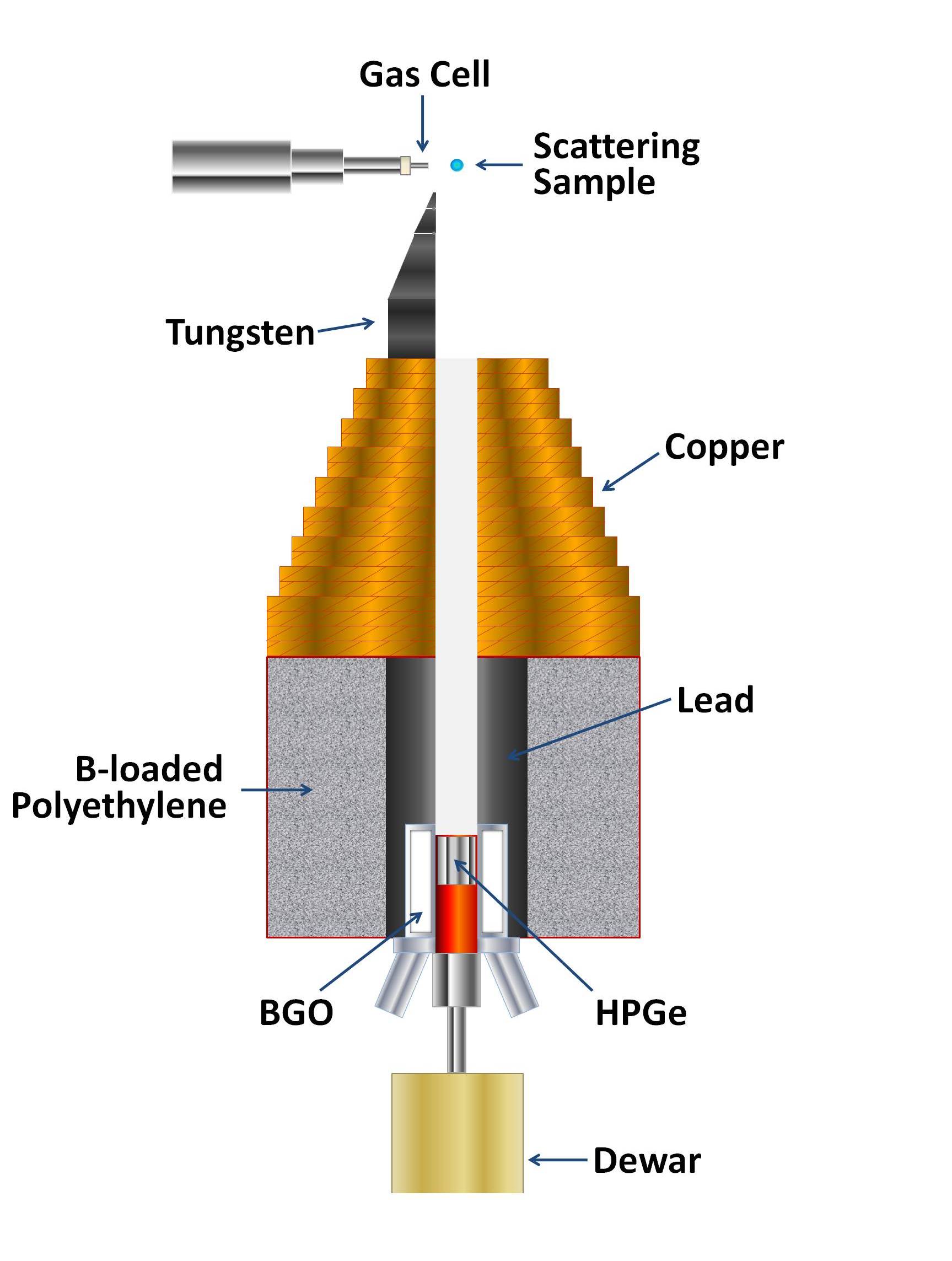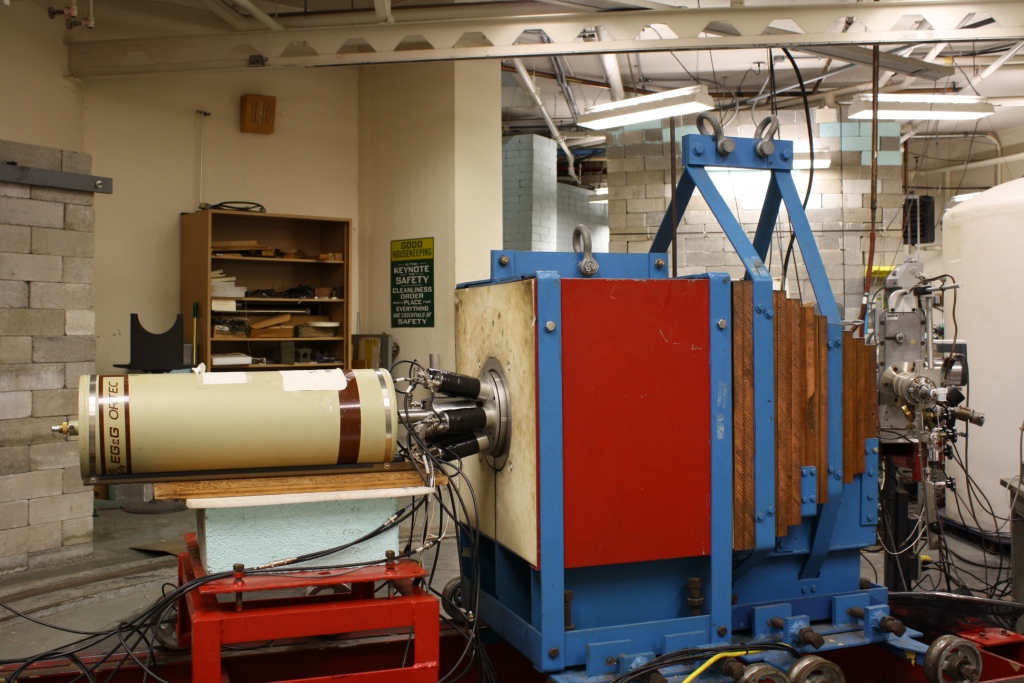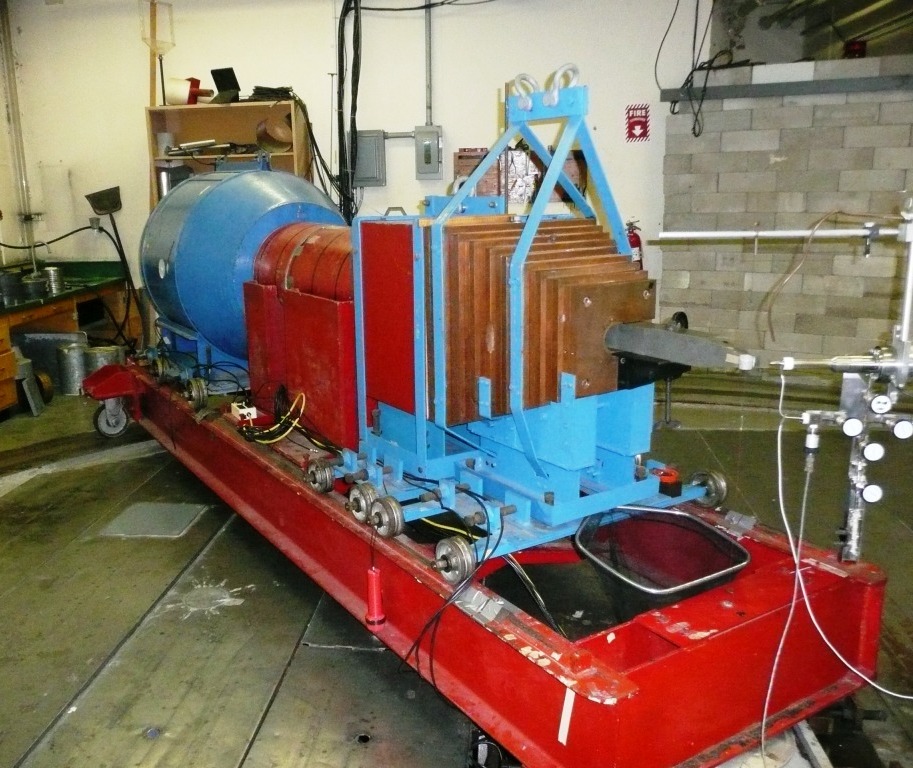We primarily conduct inelastic neutron scattering, (n,n′γ), experiments. Nearly monoenergetic neutrons are created via reaction of accelerator produced protons or deuterons with tritium or deuterium gas. These neutrons can be scattered from a target of the isotope of interest and either the resulting gamma rays or scattered neutrons may be detected. A few of our experimental setups are described below. For more detailed information, see J. Res. Natl. Inst. Stand. Technol. 105, 141 (2000).


The entire setup including the detectors and shielding is mounted on a goniometer such that the angle of the detector with respect to the beam direction can be varied. This creates the ability to measure angular distributions of the emitted gamma rays and allows the use of the Doppler-shift attenuation method for measuring lifetimes in the femtosecond region.
In this configuration, four HPGe detectors are used for gamma-gamma coincidence measurements.

For neutron detection, the various layers of tungsten, copper, polyethylene and lead shielding are shown above. A liquid scintillator is placed inside the blue section of shielding.